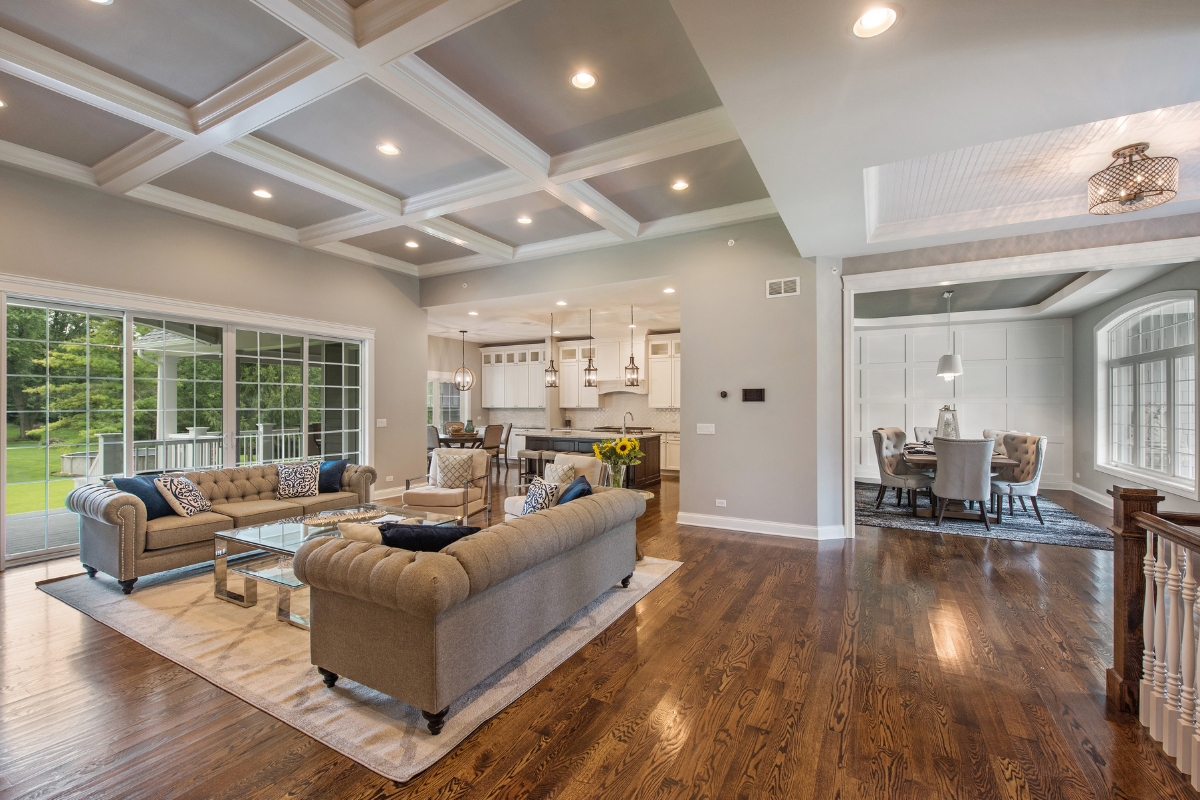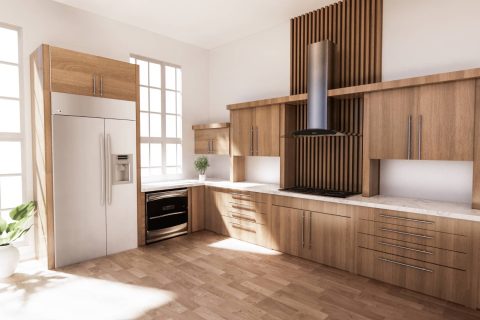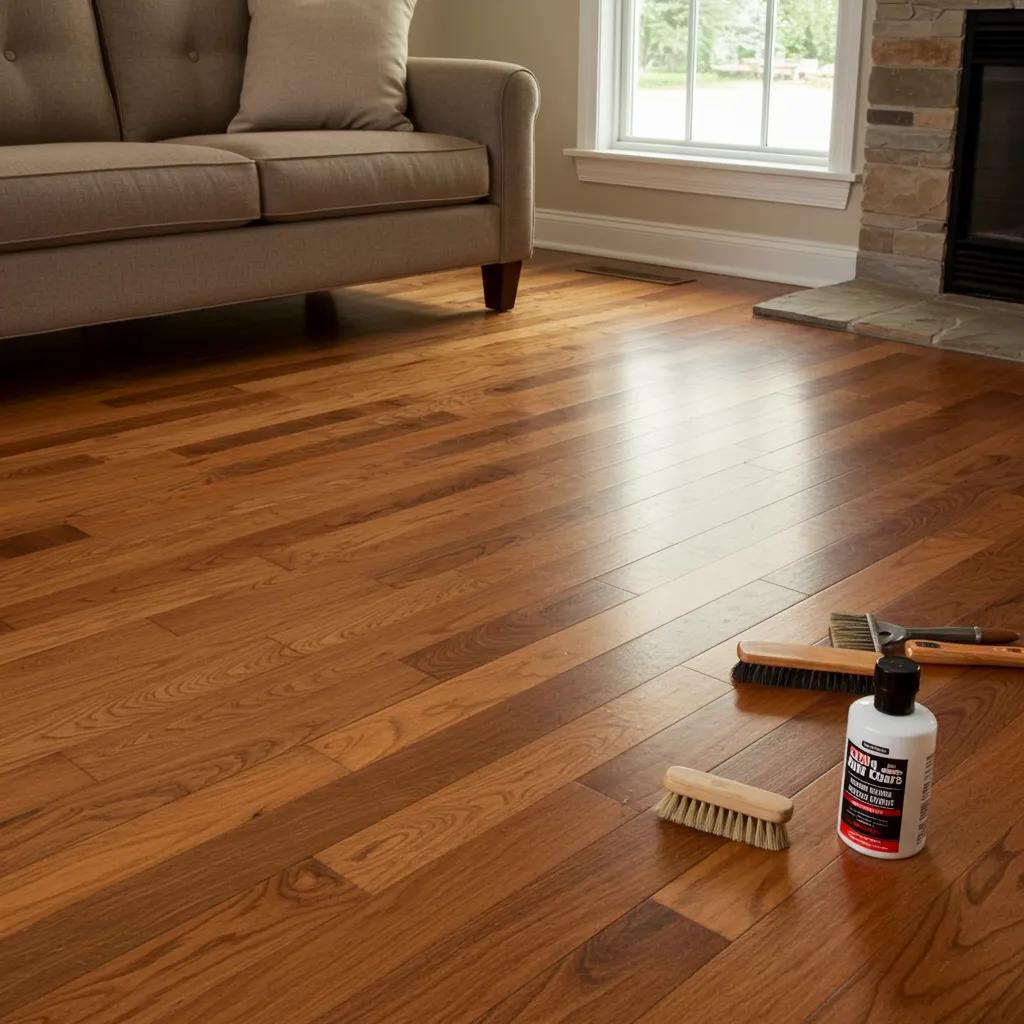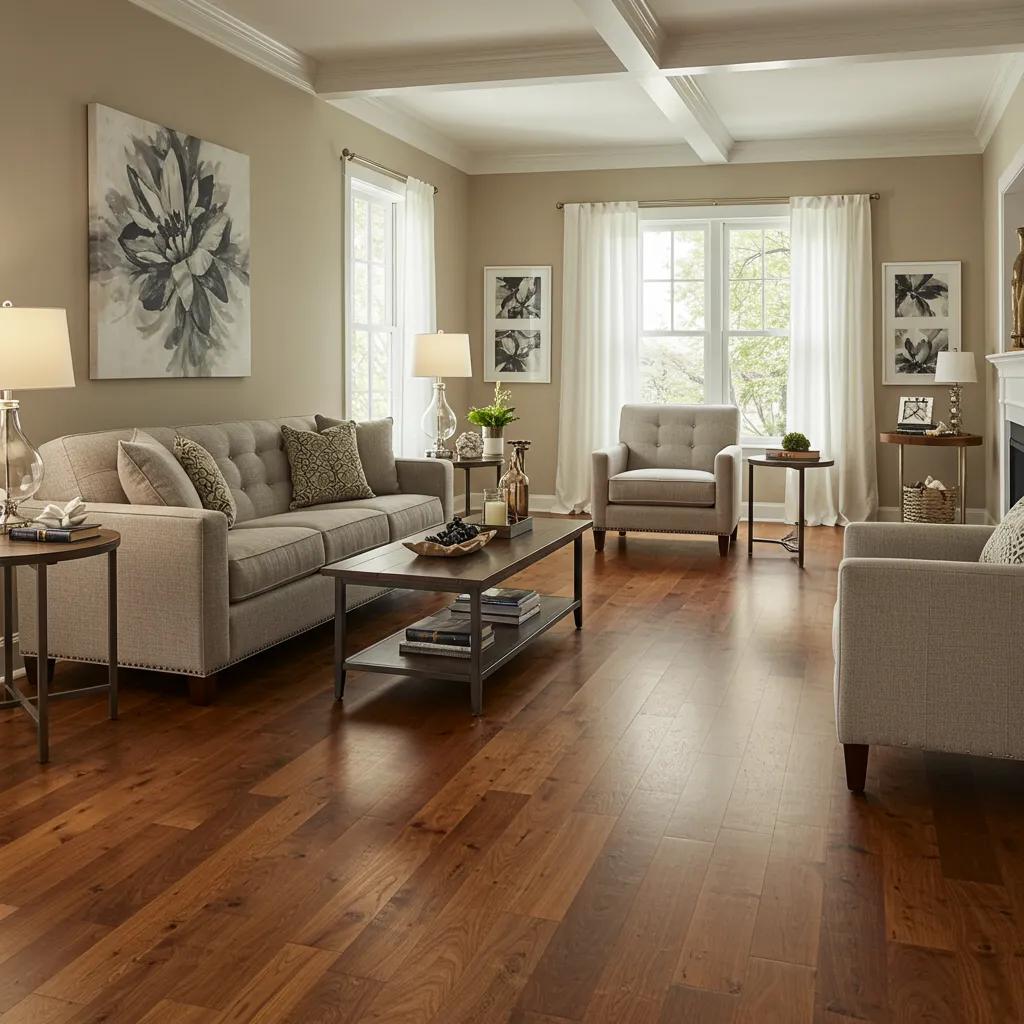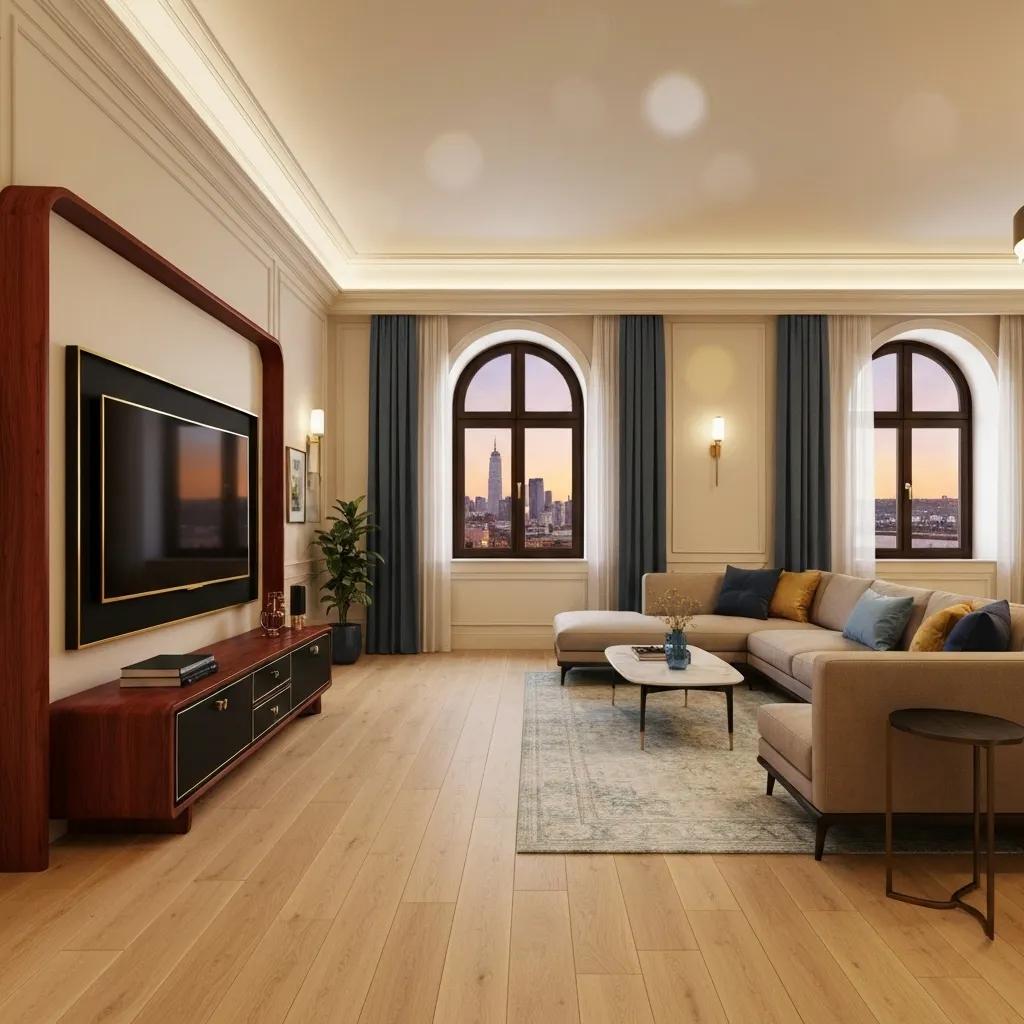Hardwood floors add warmth and elegance to any Cartersville home, but daily wear and tear can take a toll—especially in high-traffic areas or homes with kids and pets. Choosing scratch-resistant hardwood floors is a smart way to preserve that polished look without constant upkeep. Whether you’re renovating or building new, understanding how to prevent surface damage and maintain your floors will protect your investment for years to come. In this guide, we’ll cover the best scratch-resistant hardwood options and offer expert tips to keep your floors looking flawless.
Invest Once, Protect Forever: Scratch-Resistant Floors for Cartersville Homes
Choosing the Right Scratch-Resistant Hardwood Flooring
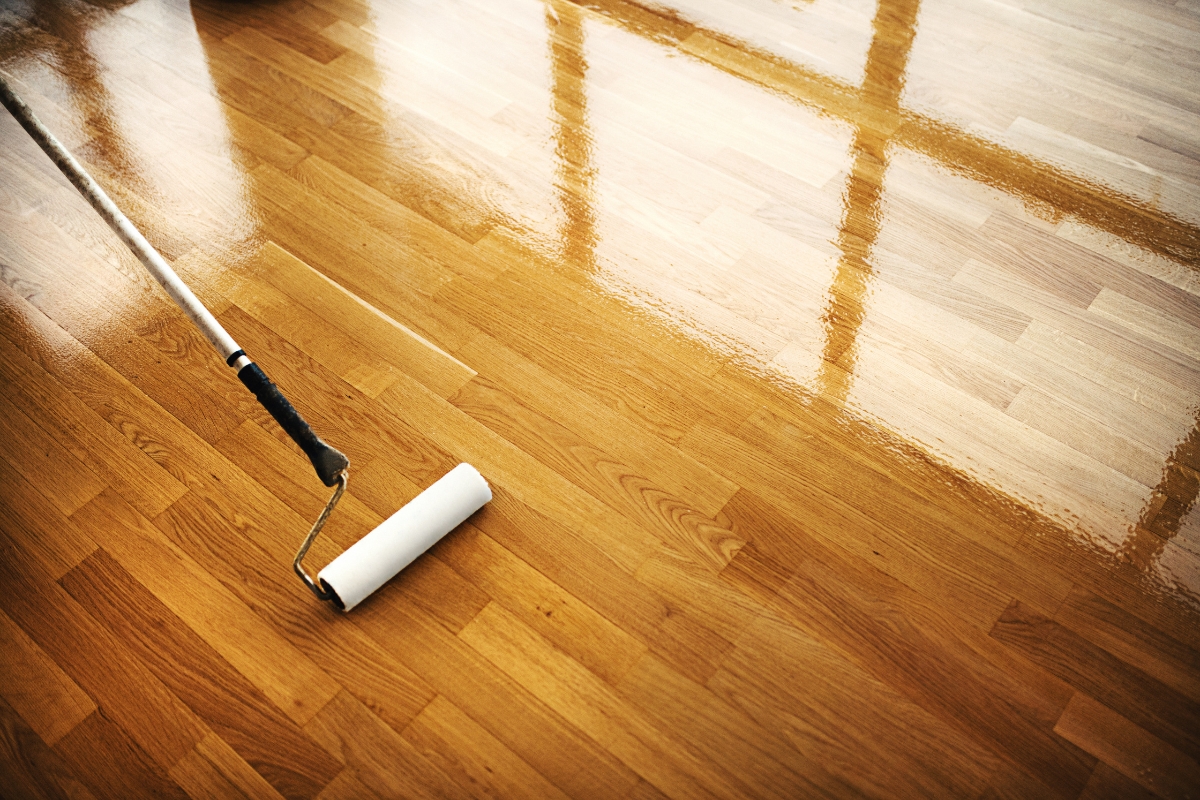
If you’re looking for hardwood flooring that can handle everyday wear, scratch resistance should be a top priority. It all starts with the type of wood you choose. Some species are naturally tougher than others. Hickory, maple, and white oak are some of the most durable options, scoring high on the Janka hardness scale. These woods are less likely to dent or scratch under the stress of regular foot traffic, pets, or moving furniture.
But the wood species alone isn’t the full story. The finish applied to the surface makes a big difference. Finishes that contain aluminum oxide or ceramic particles add a tough protective layer that helps resist scratches from everyday use. UV-cured polyurethane finishes are another strong option. They cure quickly and provide a harder surface, which is especially helpful in busy areas of the home.
Construction type also plays a role in long-term durability. Engineered hardwood, which combines a hardwood veneer with layers of plywood or high-density fiberboard, is designed to hold up better in changing climates. This can be important in places like Cartersville, where humidity levels shift with the seasons. Engineered options are less prone to warping and cupping, making them a smart choice for stability.
Another factor to think about is the thickness of the top layer. Thicker wear layers allow for future sanding and refinishing, giving your floors a longer life even if scratches eventually do appear. This is especially useful in homes with kids, pets, or frequent visitors.
When comparing flooring samples, test them under your actual lighting and walk on them with your everyday shoes. Some finishes may look great in a showroom but show scuffs easily at home. Asking for samples and doing a few real-world tests can help you avoid disappointment.
In the end, picking the right hardwood flooring means finding a good balance of strength, finish quality, and construction type. Taking the time to weigh your options now can save you a lot of frustration later and help ensure your floors stay looking great for years.
Understanding the Technology Behind Scratch-Resistance
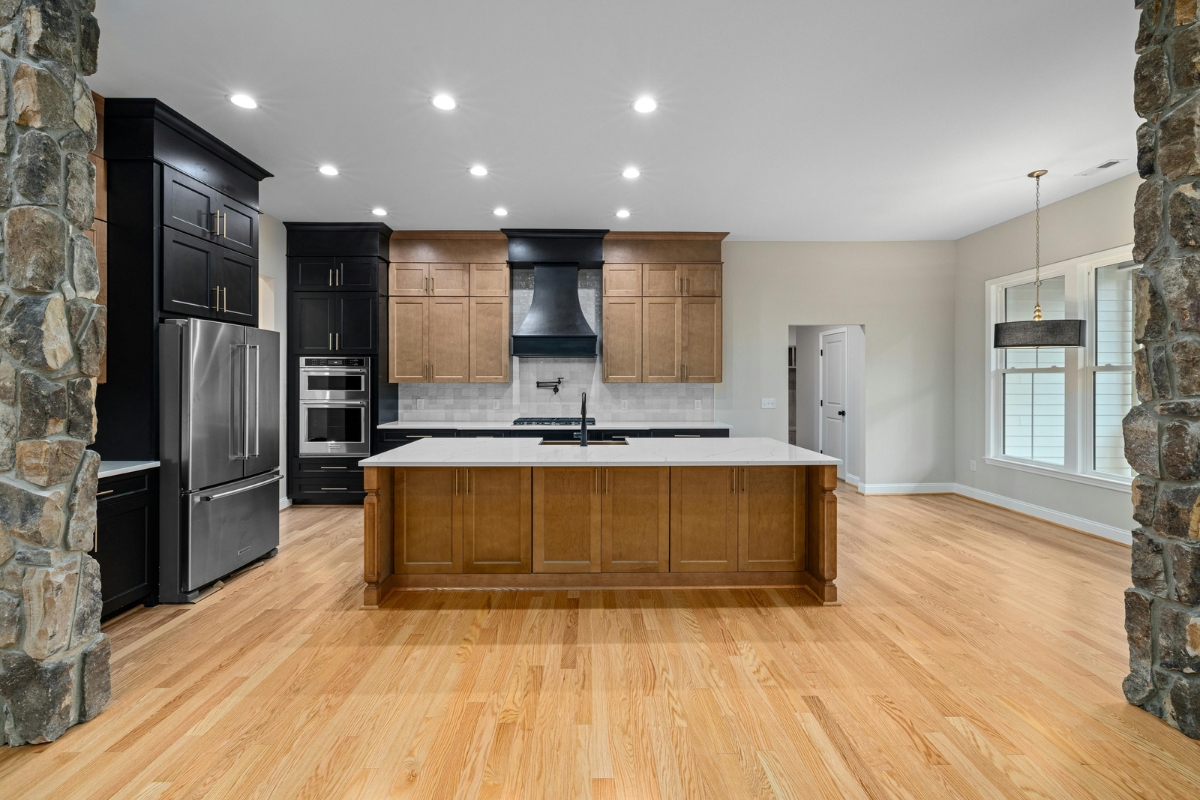
Scratch-resistant hardwood flooring has come a long way thanks to improvements in materials and manufacturing. These floors are built to hold up under daily wear and tear, and much of that durability comes down to how the surface is treated during production.
One of the most common techniques involves adding ceramic or aluminum oxide particles to the top layer of the floor. These microscopic particles are extremely hard and act like a shield, helping the floor stand up to scuffs, pet claws, dragged furniture, and general foot traffic. This layer doesn’t make the floor bulletproof, but it does offer a real boost in resistance compared to traditional finishes.
Another technology that makes a difference is UV curing. During this process, ultraviolet light is used to harden the finish more quickly and thoroughly than air drying. The result is a tighter, tougher bond that gives the floor extra strength. UV-cured coatings can be up to 30 percent harder than standard finishes, which means less damage over time.
Moisture protection has also improved. Some manufacturers use water-repelling sealers that prevent spills from soaking in. This helps avoid warping and keeps the surface from becoming dull or cloudy over time. While no wood floor is completely waterproof, these hydrophobic coatings add an extra layer of defense against everyday messes.
Most scratch-resistant options today are engineered hardwood. These planks are made by layering different types of wood, with a hardwood veneer on top and a more stable core underneath. This layered construction helps the floor stay flat and resist movement from humidity or temperature swings, which can create gaps where dirt collects or damage can start.
When these technologies work together—durable finishes, moisture barriers, and strong core construction—they create floors that are built to last in busy homes. For families in Cartersville, where kids, pets, and changing seasons can put floors to the test, understanding what goes into scratch-resistant hardwood can make choosing the right product a lot easier. It’s not just about looks; it’s about having a floor that keeps up with your everyday life.
Furniture Placement and Floor Protection
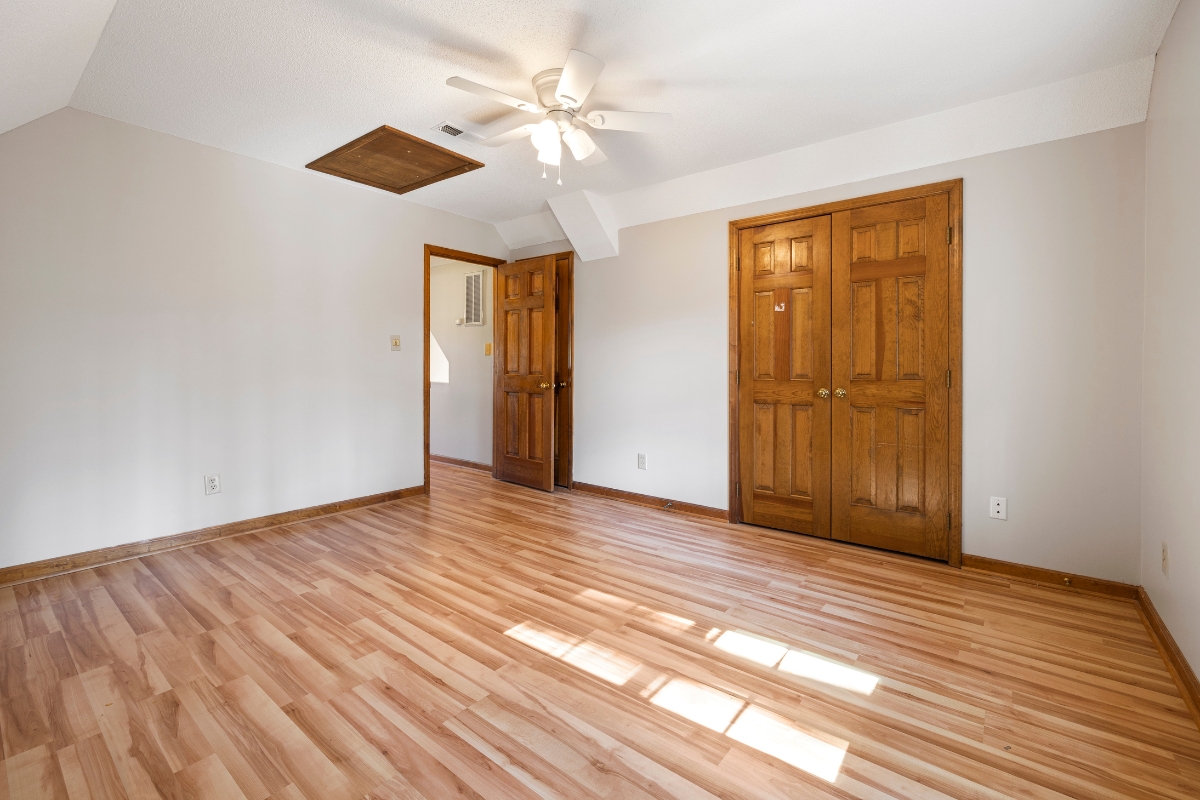
Even with scratch-resistant hardwood floors, how you place and move furniture plays a big role in keeping the surface in good shape. Over time, dragging heavy chairs or tables across the floor can wear down even the toughest finish. Small scratches may not seem like a big deal at first, but they can add up and dull the look of your flooring.
The easiest way to prevent this is by adding protective pads to all furniture legs. Felt pads work well for lightweight pieces like dining chairs, while rubber caps or polymer glides are better suited for heavier furniture. These pads reduce friction and help prevent deep scratches when furniture shifts during use. Just make sure to clean them periodically. Dust and grit can collect underneath, which defeats the purpose.
When arranging large furniture, try to spread the weight evenly across the floor. Heavy sofas or entertainment centers can leave permanent dents if all the weight rests on a few narrow legs. Furniture coasters or sliders help by distributing that weight over a larger surface. They’re also helpful when moving pieces into place without risking damage.
If you plan on rearranging a room or doing a deep clean, take the time to lift items instead of pushing them. It may seem like a hassle, but it saves your flooring in the long run. If something is too bulky to lift safely, use a blanket or a sheet underneath to protect the surface as it moves. This also helps avoid catching grit or debris under the legs, which can scratch even the most durable finish.
Consider using rugs or mats in high-traffic areas, especially under rolling chairs or in front of frequently used furniture. These simple additions cut down on direct contact and add another layer of defense for your floors.
With a few basic precautions—like adding pads, lifting instead of dragging, and using protective mats—you can keep your floors looking new for years. Scratch-resistant flooring can handle everyday life, but a little planning with furniture placement goes a long way in keeping it that way.
Regular Cleaning and Maintenance Practices
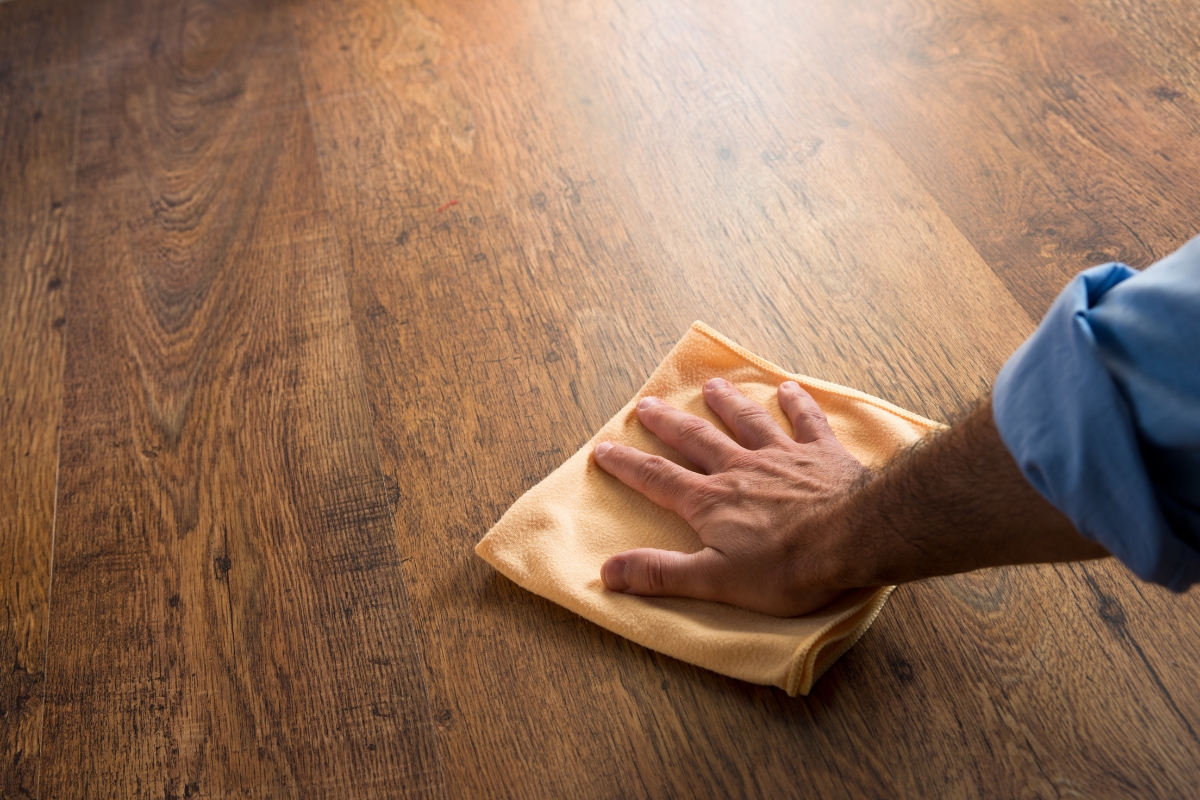
Scratch-resistant hardwood floors are built to handle wear, but they still need regular care to stay in good shape. A simple, consistent cleaning routine can help prevent the buildup of dirt and grit that might wear down the surface over time.
Start by sweeping or dust mopping every day, especially in high-traffic areas. Use a microfiber mop or a soft broom made for hardwood to pick up pet hair, dust, and small debris without scratching the floor. Avoid using stiff bristles or vacuums with beater bars, which can cause damage over time. If you vacuum, make sure to use a soft-brush attachment and focus on corners, edges, and under furniture where debris tends to collect.
For a deeper clean, use a hardwood-safe cleaner recommended by your flooring manufacturer. Look for pH-neutral, water-based formulas that won’t strip the finish or leave behind a sticky residue. Avoid using vinegar, ammonia, or oil-based soaps. These may seem harmless but can dull the surface and cause long-term damage. When mopping, lightly dampen the mop—never let water pool on the floor—and clean in small sections. Always dry the floor right away to avoid moisture seeping into seams or beneath planks.
Spills should be wiped up as soon as they happen. Even water-resistant finishes can’t protect against standing liquid for long. Use a soft cloth or paper towel to blot up any messes, and follow up with a quick wipe using a damp cloth if needed.
If you run into a stubborn spot—like a scuff mark or sticky residue—use a hardwood-approved spot cleaner. Apply it sparingly and follow the directions closely. When in doubt, check with the manufacturer or a flooring professional before trying homemade solutions or store-bought products not made specifically for hardwood.
By sticking to a simple daily and weekly routine and using the right products, you can help your scratch-resistant hardwood floors maintain their look and function for the long haul. Regular care doesn’t take much time, but it goes a long way in keeping your floors clean, safe, and looking their best.
Using Area Rugs and Runners Effectively
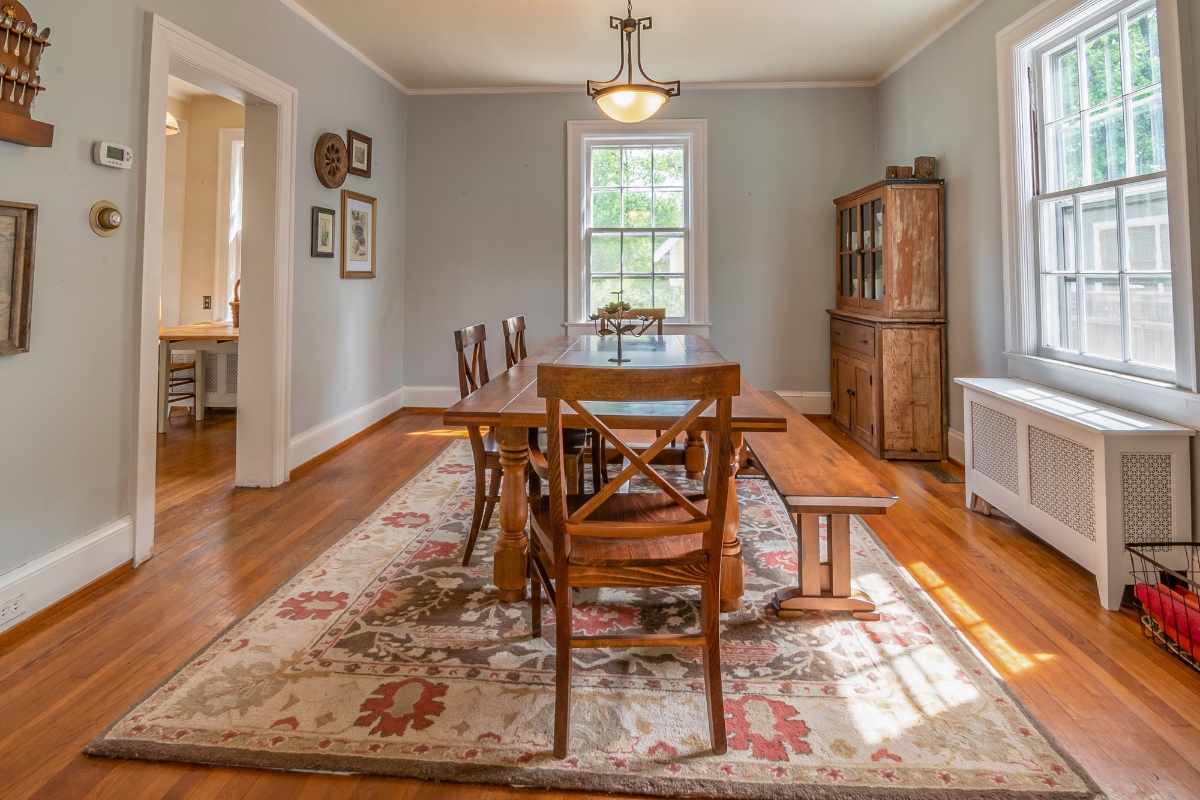
Area rugs and runners aren’t just for looks—they play a big role in protecting your hardwood floors, especially in spots that see a lot of foot traffic. Even the most scratch-resistant flooring can wear down over time if dirt and grit are constantly being tracked across the surface. Placing rugs at every exterior door is an easy first step. They help catch moisture, dust, and debris before it ever touches your floors.
Make sure to use rug pads underneath each rug. Go for ones made specifically for hardwood floors, not the rubber-backed ones that can leave marks. A quality pad will keep the rug in place and help trap particles in the rug itself instead of letting them grind into the wood.
In long hallways or busy paths between rooms, runners add a layer of protection while tying the space together visually. Choose low-pile rugs with a tight weave so they don’t hold onto moisture or shed too much, both of which can cause problems over time. Rotate your rugs every few months to even out the wear and give them a good shake or vacuum regularly to keep dust and dirt under control.
Under dining tables or in living room seating areas, rugs do more than warm up the space. They help catch crumbs and protect the floor from sliding chairs or heavy furniture legs. Just make sure chairs can move easily across the rug and that it’s large enough to handle the full footprint of the furniture when it’s in use.
When picking rugs, think about more than color and pattern. Choose materials that are easy to clean and tough enough to hold up to daily use. Wool, synthetic blends, and indoor-outdoor fabrics tend to work well.
With just a bit of planning, your rugs and runners can serve as both design features and functional tools for keeping your floors in top shape. They’re an easy way to cut down on wear and tear while adding a cozy, finished feel to every room.
Dealing with Pet-Related Challenges
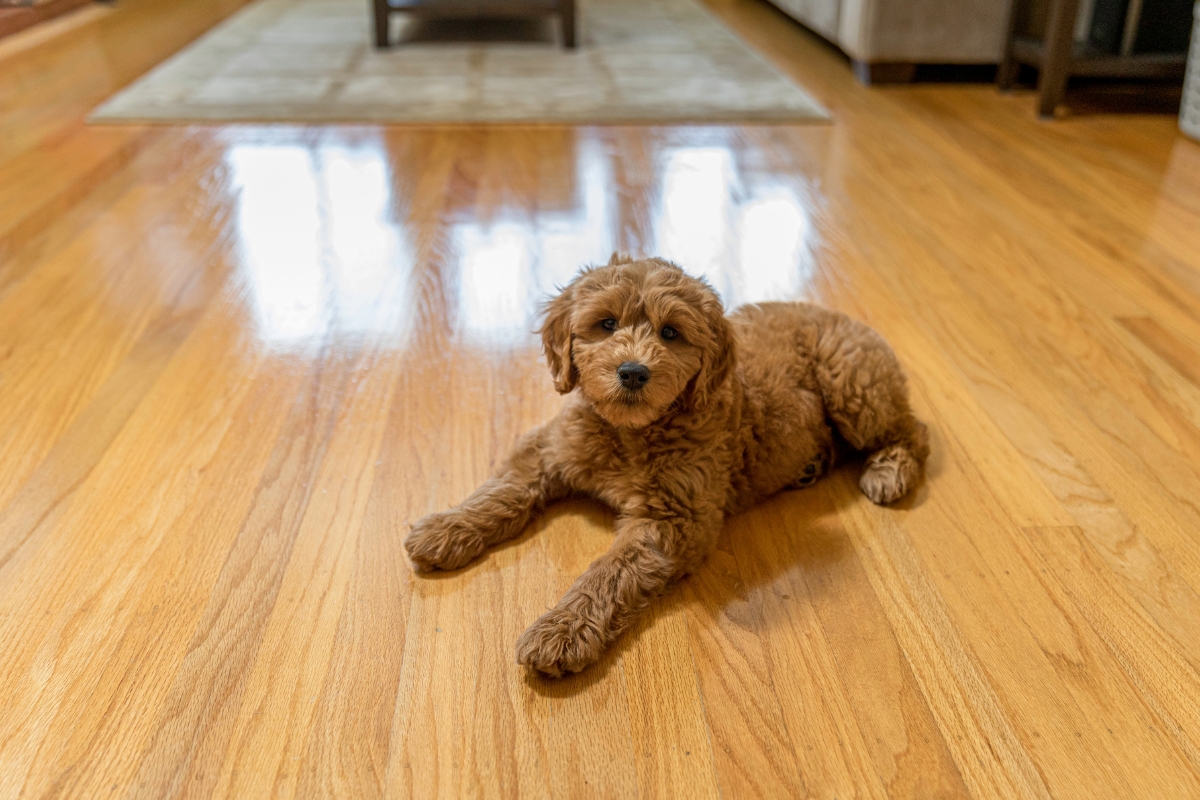
Having pets around makes a house feel like home, but their claws and messes can take a toll on hardwood floors. Even with scratch-resistant flooring, it’s important to take a few extra steps to keep your surfaces looking good.
Start with nail care. Long nails can leave behind tiny scratches that add up over time. Keep your dog’s or cat’s nails trimmed regularly. Nail grinders made for pets can help smooth sharp edges. If you’re unsure how to do it safely, your vet or groomer can guide you. Making nail trimming part of a routine can go a long way in preventing unnecessary wear on your floors.
Another helpful tip is to limit where your pets play. Try using rugs, runners, or padded mats in high-traffic spots where your pet tends to run or wrestle. These soft areas absorb a lot of the impact from energetic pets and add a bit of protection underfoot.
Accidents happen, especially with puppies, older pets, or during bad weather. To prepare, keep absorbent mats near entry doors, feeding stations, and pet beds. These help catch dirt, moisture, and spills before they spread. After your pet comes in from outside, take a moment to wipe their paws with a towel to keep grit and water from scratching or staining the wood.
If an accident does occur, clean it up right away. Use a floor-safe, pH-neutral cleaner and make sure the area is dried thoroughly to prevent warping or staining. Some manufacturers also offer pet-safe protective sprays or sealants that add another layer of defense. Just make sure whatever you use is compatible with your floor’s finish.
It also helps to keep pet toys and food bowls in low-risk zones or on mats, since excited play or sloppy eating can leave marks if you’re not careful.
By focusing on simple, consistent habits like grooming, spot protection, and quick cleanups, you can keep your hardwood floors in great shape while still giving your pets the freedom to enjoy your home with you. With a little effort, it’s possible to have both scratch-resistant floors and happy pets.
Preventing Moisture Damage
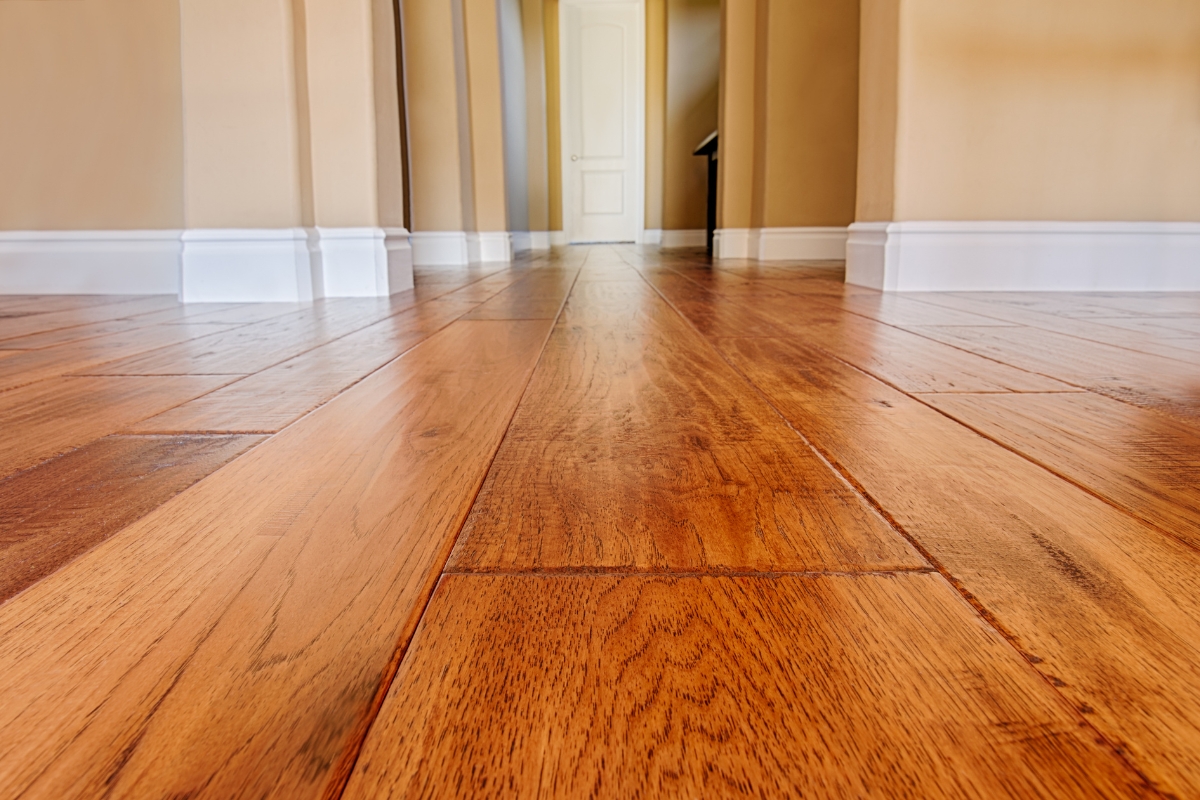
Moisture is one of the biggest threats to hardwood flooring, even if it’s designed to be scratch-resistant. Too much humidity or water exposure can lead to swelling, buckling, staining, or even the layers of the flooring separating over time. In Cartersville, where summer humidity can spike, it’s especially important to keep moisture under control year-round.
Start by keeping your home’s indoor humidity between 35 and 55 percent. A dehumidifier can help during hot, sticky months, while a humidifier is useful during the winter when the air gets dry. Air conditioning also helps regulate moisture levels while keeping your home comfortable.
Spills should always be cleaned up right away. Use a dry or slightly damp microfiber cloth to soak up liquid and dry the area completely. Letting water sit on your floors—even for a few minutes—can allow it to seep through small cracks or joints. This is especially true in high-risk areas like kitchens, bathrooms, and entryways.
Avoid using steam mops or traditional wet mops on hardwood floors. While these methods may seem convenient, they leave too much moisture behind and can wear down the finish or even damage the wood underneath. Stick to cleaning products made for hardwood, and always follow the manufacturer’s care instructions.
In areas prone to splashes or spills, like under kitchen sinks or in front of bathtubs, place rugs or mats that are labeled safe for hardwood use. Look for ones with breathable or mesh backings so they don’t trap moisture underneath. Avoid rubber or foam backing that can block airflow and cause problems over time.
You should also do regular checks around appliances, plumbing fixtures, and windows. Look for signs of leaks, loose seals, or condensation. Replacing old gaskets and keeping caulk in good shape around tubs and sinks can stop water issues before they start.
By staying on top of small maintenance tasks and watching your home’s moisture levels, you can keep your scratch-resistant hardwood floors looking their best and prevent long-term damage. It’s all about keeping water where it belongs—and away from your floors.
Implementing a No-Shoe Policy at Home
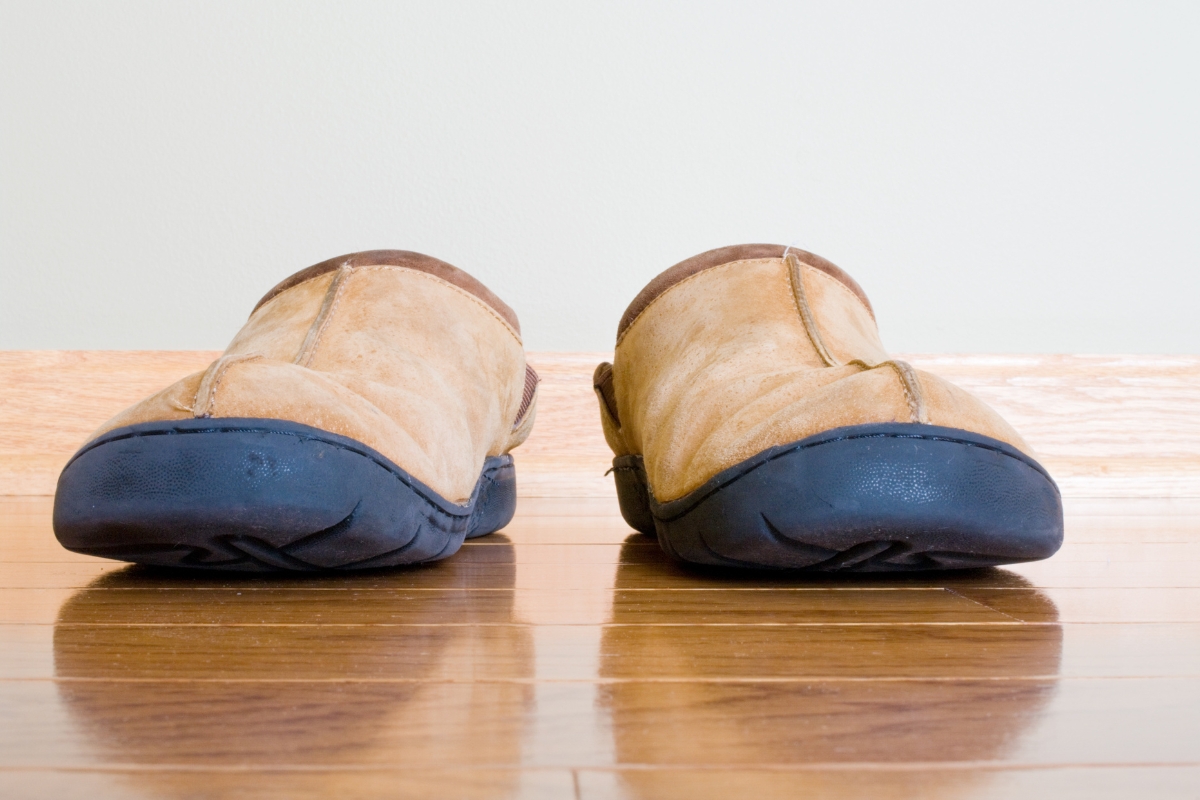
One easy way to protect your scratch-resistant hardwood floors is by keeping shoes off inside the house. Shoes pick up dirt, small stones, and other debris from outside that can scratch or wear down the finish over time. Even if the damage isn’t obvious right away, it builds up and dulls the surface.
Start by making it a habit for everyone in your household to take off their shoes at the door. Having a designated spot where shoes are removed sends a clear message and helps keep things organized. Place a sturdy mat outside the front and back doors to catch loose dirt before anyone steps inside. Inside, use a second rug to grab any leftover moisture or particles.
To make things easier and more comfortable, provide house slippers or indoor-only socks near the entrance. A small basket with clean pairs gives guests a clear alternative without putting them on the spot. You can also keep a shoe rack, bench, or cubbies by the door to make the transition smoother. A bench not only adds a touch of style but also gives people a place to sit while removing or putting on shoes.
If you have pets, the same principle applies. Wipe their paws before they come inside to prevent mud and grit from scratching the floors. You may also want to keep a towel or pet-safe wipes near the door for this purpose.
For homes with kids, lead by example. Children are more likely to follow the rule if they see adults doing the same. You can even make it fun by letting kids pick out their own indoor slippers or decorate their cubby space.
Implementing a no-shoe rule doesn’t mean sacrificing convenience or style. With a few smart layout changes and the right accessories, you can protect your floors while keeping your entryway clean and welcoming. Over time, this simple habit can help extend the life of your hardwood flooring and reduce how often you need to deep clean or refinish it. It’s a small change that makes a big difference.
Conclusion: Preserving the Timeless Beauty of Your Scratch-Resistant Hardwood Floors
Scratch-resistant hardwood floors offer Cartersville homeowners the perfect blend of beauty and durability, standing up to daily wear while maintaining their elegant finish. By choosing high-quality finishes, using protective pads under furniture, and maintaining a regular cleaning routine, you can keep scratches at bay and enjoy a flawless floor for years. Ready to upgrade your home with hardwood flooring that’s built to last? Call Diaz Hardwood Floors at 404-791-0444 or visit our site to learn about our premium scratch-resistant options and schedule your consultation today.

